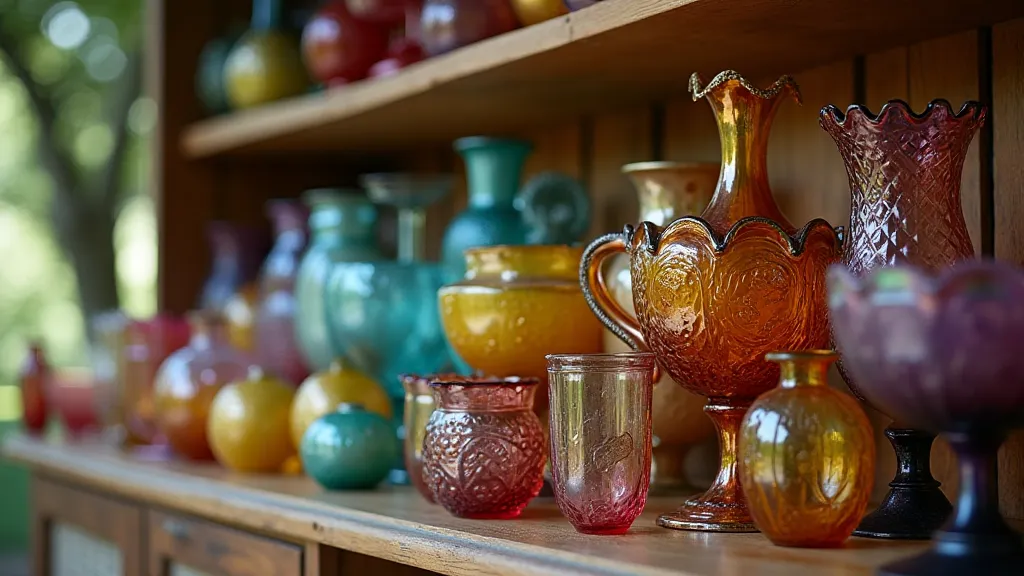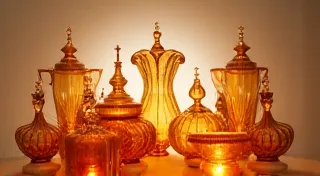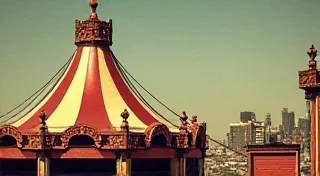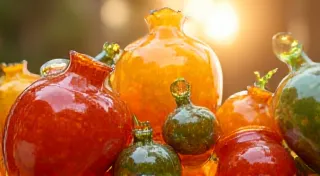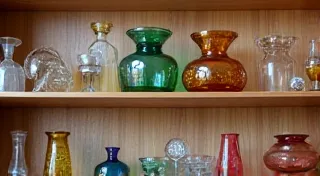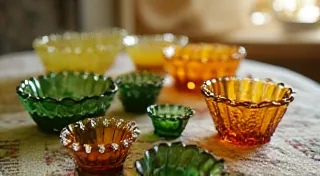Beyond Peacock: Exploring Unusual and Rare Carnival Glass Colors & Patterns
While Peacock carnival glass is undeniably iconic – its iridescent swirls of blues, purples, and greens instantly recognizable – the world of vintage carnival glass extends far beyond this single, celebrated color. Serious collectors and those seeking true rarity often look past the common varieties to discover a dazzling array of lesser-known colors and patterns. This article will explore some of these unusual and rare finds, diving into their history, scarcity, and what makes them so sought-after. For those new to the world of collecting, understanding the most cherished and recognizable designs is a great starting point; check out our guide to popular carnival glass patterns to learn more.
A Brief History – Why So Many Colors?
Carnival glass, typically produced between 1907 and 1923, was intended as an affordable alternative to expensive cut glass. Manufacturers like Fenton, Imperial, and Northwood experimented with different metallic oxides in their glass formulas to achieve a wide range of colors and effects. The metallic compounds react with the glass when fired, creating the characteristic iridescence. Many colors were short-lived production runs, meaning relatively few pieces were made, driving up their value today. The artistry involved in creating these unique effects was truly remarkable, and understanding the nuances of manufacturing helps appreciate the rarity of certain colors. The brief production windows, often dictated by the availability of specific raw materials, contributed significantly to the scarcity we see in the collector’s market today.
The Rarity Spectrum: A Few Notable Examples
Let's journey through some of the more elusive colors and patterns. Please note, rarity is often subjective and fluctuates based on auction results and market trends. Identifying and appreciating these treasures often requires more than just an eye for beauty – it involves understanding the specific patterns and manufacturing techniques employed by different companies. Understanding how those techniques were applied also illuminates the historical context of these fascinating pieces.
Ruby Stain: The Jewel-Toned Treasure
Ruby Stain carnival glass is arguably the rarest and most valuable of the colors. Its deep red hue, tinged with orange and brown, is breathtakingly beautiful. The exact formula for Ruby Stain remains a mystery, with speculation that it involved iron and selenium compounds. Very few pieces exist, and they command extremely high prices. Finding a Ruby Stain piece is the holy grail for many carnival glass collectors. It’s believed that the experimentation required to achieve this color resulted in high production costs and a short lifespan for this coveted shade. It's a testament to the ingenuity of the glassmakers and the power of experimentation that such a stunning color was ever achieved. Its beauty is often compared to precious gemstones, solidifying its status as a true collector's prize.
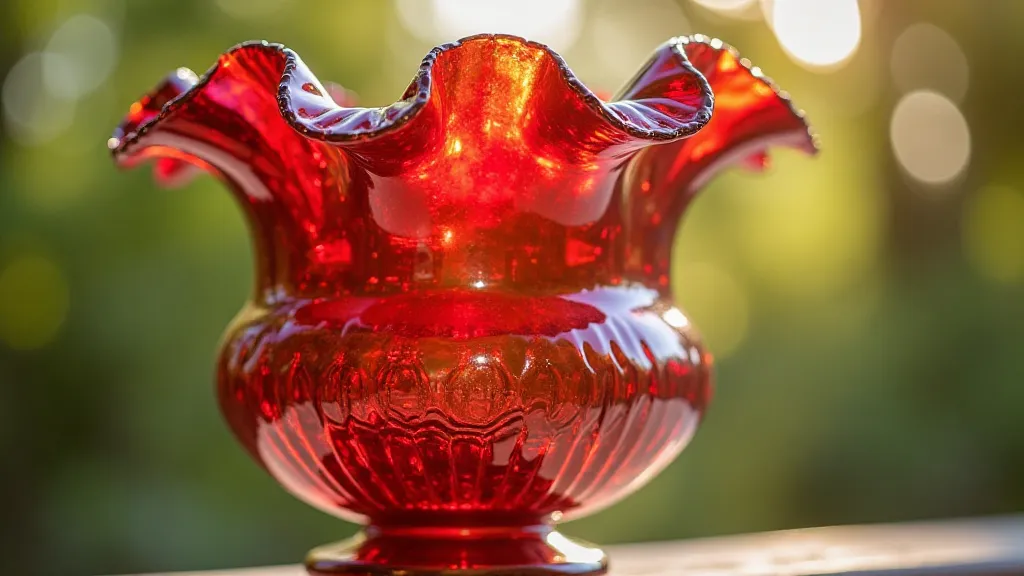
Blue Jack: A Cool and Mysterious Shade
Blue Jack, distinct from other blue carnival glass varieties, has a unique, almost smoky quality. Its muted blue tones are often combined with a subtle gold shimmer. The precise reasons for its distinct appearance are unknown, but it’s believed to be a short-lived color experiment. Unlike some other blues, Blue Jack rarely displays the vivid iridescence of Peacock. Its subdued beauty is part of its appeal. The rarity of Blue Jack is further enhanced by the challenges in definitively identifying it, making the process of adding it to your collection even more rewarding. The unique nature of its color also means that it rarely appears in the most common patterns, further increasing its desirability amongst dedicated collectors.
Teal Glass: An Enigmatic Green-Blue
Teal carnival glass exists in a small but enthusiastic collector circle. Its unique blend of green and blue offers a cooler tone than many other varieties. It's often confused with other blue or green carnival glass, highlighting the challenge of accurate identification. Because it is rare, Teal glass pieces often command high prices. The subtleties that distinguish Teal from similar colors can only be truly appreciated through careful examination and comparison with other pieces, a skill that many collectors hone over time. The color’s unusual depth also contributes to the complexity in differentiating it from similar shades, making positive identification a true test of expertise.
Gold Carnival Glass: Shimmering Beauty
True Gold carnival glass is more than just iridescent gold; it’s a color that has a golden tint within the glass itself. It’s distinct from many gold-iridescent pieces, which simply have a gold shimmer *on* the surface. Many collectors are drawn to the warm glow and perceived value associated with gold, which has contributed to a renewed interest in identifying and acquiring this variety. The manufacturing process for Gold carnival glass was likely complex and involved careful control of metallic additives, making it quite rare. Understanding these subtleties is crucial when building a valuable and authentic collection.
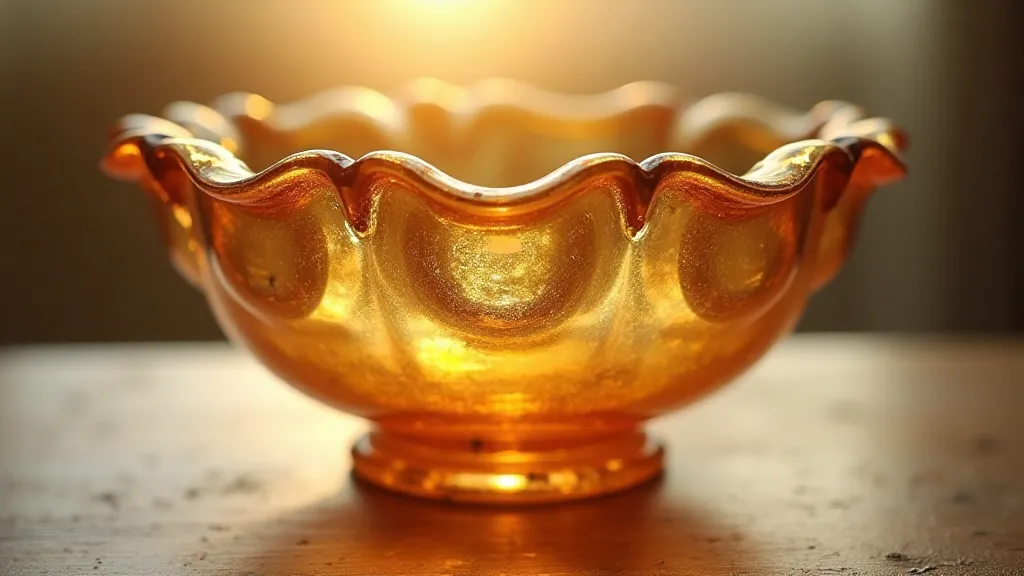
Other Notable Rarities
Beyond the colors already discussed, a number of other hues and shades are coveted by serious collectors. The search for these rare finds can be a lifelong pursuit, filled with excitement and discovery. The allure of uncovering a piece previously unknown or misidentified is a powerful draw for serious enthusiasts.
- Olive Green: A muted green with subtle iridescence.
- Wisteria: A lavender color, often mistaken for Amethyst.
- Apricot: A warm orange-yellow, less common than Peach.
- Helio: A unique yellowish-brown, often associated with Fenton.
Identifying and Collecting Rare Carnival Glass
Identifying rare carnival glass requires careful observation and research. This isn't simply about recognizing the colors; it's about understanding the manufacturing processes and the context within which these pieces were produced. Many factors, from material shortages during wartime to shifts in consumer preferences, influenced the production of these colors and patterns. Here are a few tips:
- Learn the patterns: Familiarize yourself with common and rare carnival glass patterns. A deep understanding of the patterns is essential to appreciating the artistry and rarity of these pieces. It’s useful to understand not only the patterns themselves, but also the subtle variations that can arise due to minor changes in manufacturing processes.
- Examine the iridescence: Note the color, intensity, and type of iridescence. The way light interacts with the glass is a key indicator of authenticity and rarity.
- Check the base markings: Some manufacturers marked their pieces, but many did not. Even unmarked pieces can be attributed to specific manufacturers through careful analysis of the glass characteristics.
- Research auction records: Track prices and frequency of appearance for various colors and patterns. Auction records provide valuable insights into market trends and relative rarity. Examining historical auction data can also reveal previously unknown variations and attributions.
- Join collecting groups: Connect with other collectors for insights and identification assistance. The camaraderie and shared knowledge within collecting groups are invaluable resources for both novice and experienced collectors.
- Consider the context of manufacture: Understanding the historical circumstances surrounding a piece’s creation can shed light on its rarity and value. For instance, wartime material shortages often led to changes in production methods and color availability.
Beyond the Peacock: A Continuing Journey
Collecting carnival glass is a rewarding journey of discovery. While Peacock remains a beloved classic, exploring the rarer colors and patterns expands your appreciation for this fascinating art form and unlocks a deeper understanding of its history and artistry. The world of carnival glass encompasses a vast and fascinating range of colors and patterns, and continued research and exploration are essential to truly appreciating its richness and complexity. The dedication to uncovering these hidden gems elevates the collecting experience from mere acquisition to a passionate pursuit of knowledge and beauty. The world of carnival glass is vast and ever-revealing, with new discoveries waiting to be made by those willing to delve deeper. For those looking for even more in-depth information, consider exploring popular carnival glass patterns to understand the context of the more common pieces before venturing into the rarer varieties.
